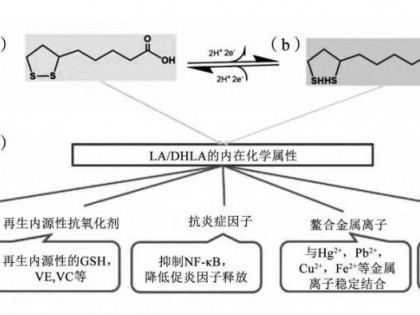摘要: 叶酸普遍存在于各类食物中,但由于叶酸的不稳定性以及饮食习惯的差异性,各国叶酸缺乏现象普遍存在。叶酸是参与核酸合成及细胞分裂分化的重要物质,叶酸缺乏引起机体功能的混乱,由此引发癌症等一系列的疾病。大部分乳酸菌是叶酸缺陷型菌株,但越来越多的研究表明其很多种类都具有叶酸合成能力。本文主要概述产叶酸乳酸菌的分类,乳酸菌生物合成叶酸的机制,以及利用乳酸菌进行的叶酸基因工程研究进展。
关键词: 乳酸菌 自然叶酸 合成叶酸 生物合成 植物乳杆菌
Research progress of the folate synthesized by lactic acid bacteria
HE Shu-Fen, LI Xiao-Ran, LIU Chen-JianCorrespondent author newstaar8@hotmail.com
Abstract: Folate are presented in all kinds of foods, but folate deficiency in human body still exist in every country due to the difference of dietary habit and unstability of folate. Folate are the important material that participate in synthesis of nucleic acid and the cell division and differentiation. Folate deficiency lead to the disorders of body functions, thus lead to a serise disease such as cancer. Even though most lactic acid bacteria (LAB) are folate-defective strains, more and more studies indicated that a lot of strains among LAB have the capability to synthesize folate. This review summarized the progress on species of LAB with the capacity of synthesizing folate, their folate synthesis mechanism, and folate gene engineering carried by LAB.
Key words: Lactic acid bacteria Folate Folic acid, Biosynthesis Lactobacillus plantarum
叶酸是一种由嘌呤、对氨基苯甲酸及多聚谷氨酸尾等3部分组成(图 1)的水溶性B族维生素,分布广泛,普遍存在于动植物和传统发酵食品中,但不稳定,在酸性环境及光照条件下易分解[1]。叶酸有着重要的生理功能,其备受人们青睐与关注的最早原因是叶酸缺乏对胎儿及婴幼儿神经系统发育的影响;随着研究深入,发现叶酸还具备抗肿瘤,防治心脑血管疾病及肠道疾病的功能[1, 2, 3, 4, 5]。然而人类等高等动物却由于缺乏相应的叶酸合成基因而不能合成自身所需叶酸,这些叶酸都只能通过饮食或吸收肠道菌群分解代谢产生叶酸的方式从外界摄入。在中国尤其是农村的妇女中叶酸摄入量远远达不到推荐水平[6],因此如何大量制备与合成叶酸就成为了目前的研究热点。

图 1 叶酸结构式
Figure 1 The structure of folate
图选项
摄食天然植物组织的饮食补充是机体补充叶酸的传统方式,该方式可直接补充能被人类利用吸收的蝶酰多聚谷氨酸叶酸与4-甲基-四氢叶酸[7],但植物来源的叶酸易受时间条件限制,生产成本高及烹调过程中损失率较高等不足。随着认识的深入,人们开始使用合成叶酸,虽然其吸收利用率高,但备受争议,Christensen等[8]研究数据显示小鼠大剂量服用后亚甲基四氢叶酸还原酶量减少活性降低,这就直接导致肝细胞退化变性,造成肝脏损伤,突变的肝细胞改变了脂类代谢。另外值得关注的是大剂量合成叶酸所造成的潜在的副作用还有认知功能障碍和癌症等[9];同时其在亚临床癌和反向健康效应中起着模棱两可的作用[10]。与之相比,天然叶酸尤其是益生菌来源的叶酸有安全性高、吸收效果好、无毒副作用等优势,既能补充叶酸还能提供机体所需的其他营养素,即使机体代谢功能缺陷也不会影响它的生物利用率[11]。乳酸菌(Lactic acid bacteria,LAB)因其是国际公认的益生菌,被广泛应用于食品工业和医疗保健业。研究证实肠道微生物中的乳酸菌可以代谢产生叶酸等维生素,是宿主维生素的主要来源之一,因此乳酸菌是生物合成叶酸的最好选择[12]。
1 乳酸菌的概述
乳酸菌主要指在发酵过程中能利用碳水化合物进行发酵,产生以乳酸等有机酸为主要发酵产物的一群最具代表性的益生性细菌,它只是一种惯用叫法,而不是微生物分类学上的名称。从分类学上看,它分属于43个属,包含373个种和亚种。乳酸菌大多属于耐氧性厌氧菌、兼性厌氧菌或严格厌氧菌,在生物体和自然环境中分布广泛,如:人和动物的消化系统、泌尿生殖系统、粪便;植物体、发酵动植物食品和饮料,土壤、淤泥和污水中均有分布。相关研究表明,发酵食品中的乳酸菌有改善食品风味产生香气物质,延长食品保质期,提高食品中营养物质的吸收利用率,缓解乳糖不耐症等作用。肠道内的乳酸菌能维持人体微生态平衡,并具有免疫调节功能[13]。然而源于乳酸菌的这些特性,其在工业上的应用也十分广泛,它除了被用作发酵食品的启子外,还可以将植物来源的生物质(农作物或工业固体废渣)转化为生物燃料和更有价值的产品,包括被广泛用于化工业的乳酸,和作为生物燃料的乙醇和丁醇,生物可降解塑料聚合物,表多糖,抗菌素,包括一些维生素(维生素C、核黄素、吡哆醛、维生素B12和叶酸)和氨基酸在内的益生物质和营养制品[14]。本实验组柳陈坚等[15, 16, 17, 18, 19]从云南传统发酵食品豆豉以及女性阴道内分离得到46株具有各种生理活性的乳酸菌,其中6株分离自生殖道,40株分离自豆豉,有乳杆菌属(Lactobacillus)的植物乳杆菌(Lactobacillus plantarum,Lb. plantarum)18株;肠球菌属(Enterococcus)的粪肠球菌(Enterococcus faecalis) 6株;魏斯氏属(Weissella)的类肠膜魏斯氏菌(Weissella paramesenteroides) 6株;片球菌属(Pediococcus)的乳酸片球菌(Pediococcus acidilactici)和戊糖片球菌(Pediococcus pentosaceus)分别有7株和9株。除它的代谢产物外,乳酸菌也是基因工程研究最多的细菌,通常被用作表达载体和基因工程受体菌,经基因工程改造的乳酸菌能更好地发挥它的潜能,增强其发酵特性,扩大其应用范围。
2 产叶酸乳酸菌种属的研究
筛选产叶酸乳酸菌的研究由来已久,目前文献报道的这些菌株多属于双歧杆菌属(Bifidobacterium)、链球菌属(Streptococcus)、乳杆菌属和乳球菌属(Lactococus)等(表 1)。其中乳球菌属中Lactococus lactis ssp.cremoris CM 22 (L. lactis ssp.cremoris CM 22)和Lactococus lactis ssp. lactis CM 28 (L. lactis ssp. lactis CM 28)是最早发现具有叶酸合成能力的乳酸菌[20],但产量与其他属相比最低。乳杆菌属的乳酸菌一般来说除植物乳杆菌等少数菌株外都不产叶酸,但在培养基中添加对氨基苯甲酸(p-Aminobenzoic acid,pABA)后大部分能代谢产生叶酸,而且叶酸产量相对比较高(产量>54 µg/L),Hugenschmidt等[21]的研究发现Lb. plantarum SM39的叶酸产量更是高达(397±60) µg/L (表 1)。双歧杆菌属与链球菌属的乳酸菌虽能产生叶酸,但叶酸的相对产量比其他乳酸菌低(表 1)。这些产生叶酸的菌株大多来自天然发酵食品,如高产叶酸Lb. plantarum SM 39分离自意大利腊肠,Lb. plantarum CN-49分离自日本豆腐[22],Lb.helveticus CD 6和Lb.delbrueckii subsp. bulgaricus CRL均分离自传统发酵乳[23]。
表 1 乳酸菌叶酸产量
Table 1 Folate production of lactic acid bacteria
| Microbial species | Folate (µg/L) | Reference |
| Lactococus lactis ssp. cremoris CM 22 | 12.5 | [20] |
| Lactococus lactis ssp. lactis CM 28 | 14.2 | [20] |
| Lactococus acidophilus N 1 | 63.9±5.2 | [24] |
| Lactococus acidophilus 4356 | 53.9±4.6 | [24] |
| Lactobacillus delbrueckii ssp. bulgaricus 449 | 62.8±2.1 | [24] |
| Lactobacillus delbrueckii ssp. bulgaricus 448 | 68.5±1.8 | [24] |
| Lactobacillus delbrueckii ssp. bulgaricus CRL 863 | 86.2±0.3 | [25] |
| Lactobacillus coryniformis CN-229 | 81±12 | [22] |
| Lactobacillus plantarum SM 39 | 397±60 | [21] |
| Lactobacillus plantarum CN-49 | 108±9 | [22] |
| Lactobacillus brevis SM 34 | 131±196 | [21] |
| Lactobacillus brevis MZ 14 | 54±24 | [21] |
| Lactobacillus reuteri ATCC 55730 | 125±28 | [21] |
| Lactobacillus fermentum SM 81 | 84±32 | [21] |
| Lactobacillus sakei CN-28 | 107±6 | [22] |
| Lactobacillus sakei CN-3 | 101±10 | [22] |
| Lactobacillus amylovorus CRL 887 | 81.2±5.4 | [7] |
| Streptococcus thermophilus CRL 415 | 76.6±7.0 | [25] |
| Streptococcus thermophilus CRL 803 | 22.4±0.4 | [25] |
| Streptococcus thermophilus 573 | 46.7±5.0 | [24] |
| Streptococcus thermophilus MC | 59.6±2.3 | [24] |
| Bifidobacterium longum ATCC 15708 | 75.8±6.5 | [24] |
| Bifidobacterium longum B 6 | 99.2±3.8 | [24] |
| Bifidobacterium adolescentis MB 114 | 44.0 | [26] |
| Bifidobacterium adolescentis MB 115 | 65.0 | [26] |
| Bifidobacterium adolescentis MB 227 | 54.0 | [26] |
| Bifidobacterium adolescentis MB 239 | 54.0 | [26] |
| Bifidobacterium infantis ATCC 15697 | 27.0 | [26] |
| Bifidobacterium pseudocatenulatum MB 116 | 82.0 | [26] |
| Bifidobacterium pseudocatenulatum MB 237 | 41.0 | [26] |
| Bifidobacterium pseudocatenulatum MB 264 | 12.0 | [26] |
3 乳酸菌叶酸合成的代谢途径及其调节基因
3.1 乳酸菌叶酸生物合成的代谢途径
随着人们对叶酸生理机能重要性认识的加深,国内外学者都积极研究已知的能代谢产生叶酸的植物、真菌及原核类的细菌,且均取得了较大的进展,原核类细菌中的乳酸菌更是由于其益生特性,而成为近年的研究热点。Rossi等[27]的研究表明乳酸菌、植物及真菌的叶酸合成代谢途径包括蝶啶代谢支路(Pterin branches)及对氨基苯甲酸代谢支路(pABA branches),见图 2,这2条支路只有同时发挥作用才能促成叶酸合成。对于蝶啶代谢支路来说,乳酸菌和植物在代谢合成过程中都是经GTP和分支酸从头合成叶酸,经过GTP环化水解酶(GCHY-I,EC 3.5.4.16)的作用经分支酸形成了一个含蝶啶环的7,8-二氢新喋呤三磷酸,然后经新喋呤醛缩酶(DHNA,EC 4.1.2.25)催化形成7,8-二氢新喋呤单磷酸,7,8-二氢新喋呤单磷酸再通过二氢新喋呤三磷酸焦磷酸酶(DHNTP,EC 2.5.1.15)及6-羟甲基二氢喋呤焦磷酸激酶(DHPPK)的催化作用,逐步形成叶酸合成的重要中间产物6-羟甲基-7,8-二氢喋啶焦磷酸(DHPPP)。DHPPP这一产物在二氢蝶酸合酶(DHPS)作用下与pABA结合形成叶酸合成的直接前体二氢喋酸,最终经二氢叶酸还原酶(DHFR,EC 1.5.1.3)及叶酰谷氨酸合酶(FDGS,EC 6.3.2.17)催化成为具有生物活性且能分泌到细胞外的多聚谷氨酸四氢叶酸。pABA代谢支路相对于蝶啶代谢支路就要简单得多,主要部分为分支酸在4-氨基-4-脱氧分支酸合酶及裂解酶的作用下形成重要产物pABA,pABA形成后就会与DHPPP结合形成二氢喋酸并最终合成叶酸。对于乳酸菌等大多微生物来说pABA代谢支路的不足是可以弥补的,因为只要在培养基中添加pABA就可弥补这一代谢路径的异常或缺失。

图 2 叶酸合成途径
Figure 2 Folate synthesis pathways
图选项
3.2 乳酸菌叶酸合成的代谢基因
乳酸菌叶酸合成的两条代谢支路中存在着不少有调节作用的酶,如蝶啶代谢支路中合成中间产物DHPPP涉及到起调控作用的DHNA、DHPPPK、GCHI、DHPS及DHNTPase等5种酶分别由fol B、fol K、fol E、fol P及fol Q等5个基因编码,这些基因在乳酸菌中通常以基因簇的形式存在,上述5个基因的表达与否可直接影响着整个代谢通路。乳酸菌中的少数种属会具备上述5种基因,因此含该5种基因的乳酸菌往往具备叶酸合成能力,Sybesma等[28]在研究Lactococcus lactis中发现L. lactis MG1363和IL1403均具备上述编码叶酸代谢调控的基因fol E、fol Q (ylg G)、fol B、fol K及fol P。而整个叶酸代谢过程中合成的代谢产物DHPPP最重要,该产物的合成需要fol Q基因所编码的DHNTPase催化,因此fol Q基因成了检验乳酸菌是否具有产叶酸能力的关键基因。另有研究表明,大部分乳杆菌属的乳酸菌都缺乏fol Q基因,从而导致该类乳酸菌不能有效合成叶酸[12, 29, 30],但少数乳杆菌属的菌株,如本实验组已测序的一株植物乳杆菌菌株Lb. plantarum YML-5-2,虽缺乏fol Q基因所编码的DHNTPase,却拥有与DHNTPase功能相似的酶,因此乳杆菌属的植物乳杆菌等菌株也具有产叶酸潜能。pABA代谢支路中关键的4-氨基-4-脱氧分支酸合酶及裂解酶分别由Pab A、Pab B和Pab C基因编码控制,但相关报道表明pABA合成基因为多功能基因,具有复杂的功能,通常这些基因会融合成不同的形式,形成PabAc、PabAab、PabAa 和PabAb基因,在Corynebacterium diphtheriae中可能形成PabAa-PabAb-PabAc基因[31]。而后期起调节作用的酶DHFS、DHPS及DHFR分别由fol P、fol C和fol A这3个基因编码,其中的fol C基因编码DHFS/FDGS (二氢蝶酸合酶/叶酰谷氨酸合酶)双功能蛋白[28]。
4 乳酸菌叶酸代谢合成基因的基因工程技术
乳酸菌是一类兼性厌氧细菌,由于其营养要求高、生长缓慢且培养条件较复杂的特性决定了乳酸菌很难满足大量制备生产叶酸的需要,因此就有必要对其进行基因工程改造。现阶段乳酸菌叶酸合成相关基因的基因工程研究主要有如下两个方面:一类就是通过叶酸生物合成关键基因的过表达来提升叶酸产量;另一类则是用生物工程原理将叶酸生物合成相关的基因簇整体导入到乳酸菌中构建高产叶酸的工程株。Sybesma等[28]研究表明,过量表达L. lactis中fol KE基因,从而让该基因编码的DHPPPK和GCHI过表达,最终使菌株胞外叶酸的产量增加了近10倍,总叶酸产量增加3倍。如在过表达fol KE基因的同时增加fol C 基因的表达量就会延长叶酸在乳酸菌胞内的保留时间,这可能与fol C基因表达能够增加叶酸多聚谷氨酸尾的长度,从而抑制叶酸向胞外转运[32]。与之相反,fol A基因(编码DHFR)过表达则会让菌株产叶酸的量骤减2倍,由此可推断DHFR在叶酸生物合成中起负反馈调节的作用。Santos等[33]的研究也发现Lb. reuteri JCM 1112具有叶酸合成能力,在添加pABA的条件下同时过表达叶酸合成基因簇也能增加叶酸产量。但仅仅过表达pABA代谢支路的相关基因却不能使菌株叶酸合成量增加,只有在过表达pABA相关基因的同时过表达喋啶代谢支路的相关基因才能起到提升叶酸产量的作用;因此当pABA 合成相关基因缺失且在培养时未添加pABA,菌株合成叶酸的能力也随之消失[34]。另外,Wegkamp等[35]在将L. lactis中叶酸生物合成相关基因簇导入到叶酸营养缺陷型菌株Lb. gasseri中研究发现,只要Lb. gasseri获得叶酸合成相关基因就能表现出叶酸合成能力。LeBlanc和de Crecy-Lagard研究发现,fol Q基因只存在于乳球菌和植物中,大部分乳酸乳杆菌均部分缺失pABA相关代谢基因及fol Q基因[12, 31, 36]。由于pABA可外源性添加,fol Q基因就成为乳酸菌叶酸代谢合成相关基因生物工程操作的关键。
随着以基因组、转录组核苷酸序列为基础的组学研究的蓬勃发展,对产叶酸乳酸菌的研究已不仅仅局限于简单的基因工程技术研究,而是从全基因组的角度出发,全面而深入地解析乳酸菌生物合成目标代谢产物过程中,基因表达、蛋白质组的核苷酸序列与氨基酸序列变化及代谢产物产量变化等诸方面的关联[37]。最终可以深入了解特定乳酸菌代谢合成某些代谢产物的潜在可能性,并对相应代谢基因实施过量表达或者敲除。比较基因组学的研究,可以了解菌株缺乏的基因种类,从而有目的地导入相应的外源基因进行表达,获得相应功能性工程菌。这种建立在全基因组序列基础上的基因组工程技术,还可以通过整合转录组学数据和生物信息学的研究策略,从全基因组规模上全面了解细胞代谢网络、调节网络以及遗传和环境对细胞代谢影响并构建基因组规模的网络模型,从而全面而深入地解析乳酸菌的生理功能。正是基于这一优势,基因组工程技术的研究将会成为未来乳酸菌基因工程技术研究的趋势,也坚信将会有更多基因组工程技术改造的乳酸菌用于新型功能性发酵食品的开发。
5 乳酸菌发酵合成叶酸的影响因素
乳酸菌的营养要求较高,在发酵代谢产生叶酸的过程中易受发酵培养基的组成、是否添加pABA、酪氨酸浓度高低、温度及pH变化等因素的影响,因此探究乳酸菌叶酸发酵培养的最佳发酵条件是乳酸菌大量制备叶酸的关键。
对于大多数乳酸菌属的菌株来说,在叶酸发酵培养基中添加pABA是微生物法发酵产生叶酸的关键,因为富含pABA的培养基往往能增加乳酸菌的叶酸产量,甚至能使某些缺乏pABA相关基因但有完整喋啶代谢支路相关基因的菌株代谢产生叶酸[26, 29]。与之相反,往培养基里添加酪氨酸,尤其是高浓度酪氨酸后乳酸菌叶酸产量骤减。除了上述两因素外,含不同碳氮源及其他营养素的发酵基质也会对叶酸产量有影响。在用蔬菜、牛乳、脱脂乳、黑麦等原料作为发酵基质的研究时,脱脂乳是最适用于乳酸菌发酵产叶酸的天然发酵基质。Crittenden等[30]研究证实用两株产叶酸菌株Bacillus animalis CSCC 1941和 S.thermophiles CSCC 2000在脱脂乳中发酵时叶酸产量提高了6倍。而去叶酸培养基(FACM)是最利于Lb. delbrueckii ssp.bulgaricus CRL 863 和S. thermophilus CRL 415等菌株发酵产生叶酸并分泌到胞外的人工合成培养基,此时其胞外叶酸产量可较脱脂乳发酵时增加1.9倍[25]。此外,碳源、氮源和接种量及培养时间等因素也对叶酸产量有较大影响,如乳酸乳球菌在利用葡萄糖作为碳源时的叶酸产量较大,而嗜热链球菌则是以蔗糖为碳源时的叶酸产量较大,而乳酸乳球菌与嗜热链球菌二者的最佳接种量分别为3%和2%。最后,发酵时间也是影响叶酸产量的关键因素,相对而言发酵时间越长叶酸产量越大,但当发酵时间达到一定值后菌株自身消耗叶酸增大而导致叶酸总量在减少,研究表明大多数菌株发酵产叶酸的发酵时间为6 h,少数菌株则可延长至24 h[24, 26, 38]。
除以上因素能影响叶酸产量外,培养温度,发酵培养基的pH也能影响乳酸菌发酵产生叶酸的量。如Kariluoto等[39]研究发现大多数乳酸菌在28 °C时叶酸产量是最高的,温度过低或过高(18 °C或者37 °C)都不利于乳酸菌代谢产生叶酸。Emiliano等[40]研究发现以脱脂牛奶作为发酵基质时42 °C是发酵酸奶产叶酸的最适温度,在此条件下酸奶中叶酸产量是未发酵乳的250%,是市售酸奶的125%。另有研究发现近中性的pH值(7.0)比酸性条件(5.0)更利于叶酸产生,当发酵过程中培养基的pH始终维持在7.0时利于嗜热链球菌产叶酸,但低pH有利于嗜热链球菌将产生的叶酸分泌至胞外[29]。最后,菌株与菌株间的相互作用也是影响叶酸产量的另一个因素,Hugenschmidt等[41],将高产维生素B12菌株费氏丙酸杆菌Propionibacterium freudenreichii DF 13与高产叶酸菌株Lb.plantarum SM 39共培养,结果其叶酸水平是迄今为止报道的自然菌株最大产量的10倍以上,推测VB12也能促进叶酸产生。
6 总结与展望
随着人们对健康的要求越来越高,叶酸的重要性得到广泛认识。利用乳酸菌制备叶酸是生产叶酸最好的选择,但受产量的限制光筛选产叶酸菌株是远远不够的,如何增加其产量仍是目前研究的重点。除此之外,乳酸菌不同近亲种间的生理功能具有一定差异,它们在叶酸代谢途径上,尤其是DHPPP合成途径上是否也有一定的差异性,尚无明确的报道。同时由于缺乏系统完整的比较基因组学、转录组学和代谢产物研究,严重制约着乳酸菌及其代谢产物在新型功能性食品的开发利用。因此,研究不同种属乳酸菌的叶酸合成多样性将成为未来新的研究热点。
目前,Lb. plantarum WCSF1、Lb. plantarum JDM1、Lb. plantarum ST-III及Lb. plantarum ATCC 14917等植物乳杆菌的全基因组测序已经完成,而经比较发现植物乳杆菌是一类较为特殊的乳酸菌,其基因组相对较大,且环境适应能力强[42, 43, 44]。最重要的是植物乳杆菌的叶酸产量比其他乳酸菌高,至少高出3−4倍,因此植物乳杆菌是开发富含叶酸功能性食品的理想菌种。
参考文献
[1] Duthie SJ, Narayanan S, Brand GM, et al. Impact of folate deficiency on DNA stability[J]. Journal of Nutrition, 2002, 132(8 Suppl): 2444S-2449S
[2] Li XB, Ma QY, Cui YL. The role of folic acid in the prevention and treatment of intestinal diseases[J]. Chinese Journal of Microecology, 2007, 19(2): 238-240 (in Chinese)李雄彪, 马庆英, 崔云龙. 叶酸在肠道疾病防治中的作用[J]. 中国微生态学杂志, 2007, 19(2): 238-240
[3] Zhu SS, Mason J, Shi Y. The interventional effect of folic acid on the development of gastric and other gastrointestinal cancers─clinical trial and follow-up for seven years[J]. Chinese Journal of Gastroenterology, 2002, 7(2): 73-78 (in Chinese)朱舜时, Mason J, 施尧. 叶酸对胃癌和其他胃肠道癌发生的干预作用──临床试验七年随访[J]. 胃肠病学, 2002, 7(2): 73-78
[4] Yang YB, Tan YB, Mao XX, et al. Effect of folate on prevention and treatment of cardiovascular diseases[J]. Chinese Journal of Clinical Nutrition, 2006, 14(2): 136-139 (in Chinese)杨永宾, 谭延斌, 毛绚霞, 等. 叶酸在心血管疾病防治中的作用[J]. 中国临床营养杂志, 2006, 14(2): 136-139
[5] Eliezar J, Scarano W, Boase NR, et al. In vivo evaluation of folate decorated cross-linked micelles for the delivery of platinum anticancer drugs[J]. Biomacromolecules, 2015, 16(2): 515-523
[6] Meng Q, Zhang L, Liu J, et al. Dietary folate intake levels in rural women immediately before pregnancy in Northern China[J]. Birth Defects Research. Part A, Clinical and Molecular Teratology, 2015, 103(1): 27-36
[7] Laino JE, Juarez Del Valle M, Savoy de Giori G, et al. Applicability of a lactobacillus amylovorus strain as co-culture for natural folate bio-enrichment of fermented milk[J]. International Journal of Food Science and Technology, 2014(191C): 10-16
[8] Christensen KE, Mikael LG, Leung KY, et al. High folic acid consumption leads to pseudo-MTHFR deficiency, altered lipid metabolism, and liver injury in mice[J]. American Journal of Clinical Nutrition, 2015, 101(3): 646-658
[9] Hu J, Wang B, Sahyoun NR. Application of the key events dose-response framework to folate metabolism[J]. Critical Reviews in Food Science and Nutrition, 2015. DOI: 10.1080/10408398.2013.807221
[10] Ohrvik VE, Witthoft CM. Human folate bioavailability[J]. Nutrients, 2011, 3(4): 475-490
[11] Scaglione F, Panzavolta G. Folate, folic acid and 5-methyltetrahydrofolate are not the same thing[J]. Xenobiotica, 2014, 44(5): 480-488
[12] LeBlanc JG, Milani C, de Giori GS, et al. Bacteria as vitamin suppliers to their host: a gut microbiota perspective[J]. Current Opinion in Biotechnology, 2013, 24(2): 160-168
[13] Jensen H, Dromtorp SM, Axelsson L, et al. Immunomodulation of monocytes by probiotic and selected lactic acid bacteria[J]. Probiotics Antimicrob Proteins, 2015, 7(1): 14-23
[14] Mazzoli R, Bosco F, Mizrahi I, et al. Towards lactic acid bacteria-based biorefineries[J]. Biotechnology Advances, 2014, 32(7): 1216-1236
[15] Gong LL, Liu CJ, Gong FM, et al. Screening of high-yield lactic acid bacteria from ‘douchi’ and optimization of its lactic acid producing conditions[J]. Chinese Journal of Microecology, 2013, 25(5): 516-520 (in Chinese)宫路路, 柳陈坚, 龚福明, 等. 豆豉中高产乳酸乳酸菌的筛选及其产酸条件的优化研究[J]. 中国微生态学, 2013, 25(5): 516-520
[16] Li J, Li XR, Gong LL, et al. Study on the main organic acids and antimicrobial activity of Pediococcus acidilactici fermentation[J]. Food and Fermentation Industries, 2014, 40(5): 124-129 (in Chinese)李洁, 李晓然, 宫路路, 等. 乳酸片球菌发酵液中主要有机酸及其抑菌性研究[J]. 食品与发酵工业, 2014, 40(5): 124-129
[17] Xiang X, Liu CJ, Chen H, et al. Isolation and screening of lactic acid bacteria with antimicrobial activity from female reproductive tracts and analysis of antimicrobial substances[J]. Chinese Journal of Microecology, 2013, 25(3): 272-276 (in Chinese)向新, 柳陈坚, 陈红, 等. 生殖道中具有抑菌活性乳酸菌的分离筛选及其抑菌物质分析[J]. 中国微生态学杂志, 2013, 25(3): 272-276
[18] Xiong J, Liu CJ, Han RN, et al. Screening of lactic acid bacteria strains with high antibacterial activity from Douchi and it’s research of bacteriostatic[J]. Chinese Journal of Microecology, 2011, 23(6): 485-489 (in Chinese)熊骏, 柳陈坚, 韩瑞娜, 等. 豆豉中高效抑菌活性乳酸菌的筛选及其抑菌研究[J]. 中国微生态学杂志, 2011, 23(6): 485-489
[19] Jiang LM, Luo YY, Wang LC, et al. Optimization of production conditions and separation methods for plantaricin[J]. Modern Food Science and Technology, 2014(10): 218-225 (in Chinese)姜黎明, 罗义勇, 王良才, 等植物乳杆菌素产生条件及分离方法的优化[J]. 现代食品科技, 2014(10): 218-225
[20] Dhanya GS, Pandey A, Nampoothiri KM. Folate-producing lactic acid bacteria from cow’s milk with probiotic characteristics[J]. International Journal of Dairy Technology, 2010, 63(3): 339-348
[21] Hugenschmidt S, Schwenninger SM, Gnehm N. Screening of a natural biodiversity of lactic and propionic acid bacteria for folate and vitamin B12 production in supplemented whey permeate[J]. International Dairy Journal, 2010, 20(12): 852-857
[22] Masuda M, Ide M, Utsumi H, et al. Production potency of folate, vitamin B(12), and thiamine by lactic acid bacteria isolated from Japanese pickles[J]. Bioscience, Biotechnology, and Biochemistry, 2012, 76(11): 2061-2067
[23] Ahire JJ, Mokashe NU, Patil HJ, et al. Antioxidative potential of folate producing probiotic Lactobacillus helveticus CD6[J]. Journal of Food Science and Technology, 2013, 50(1): 26-34
[24] Lin MY, Young CM. Folate levels in cultures of lactic acid bacteria[J]. International Dairy Journal, 2000, 10(5/6): 409-413
[25] Laino JE, Leblanc JG, Savoy de Giori G. Production of natural folates by lactic acid bacteria starter cultures isolated from artisanal Argentinean yogurts[J]. Canadian Journal of Microbiology, 2012, 58(5): 581-588
[26] Pompei A, Cordisco L, Amaretti A, et al. Folate production by bifidobacteria as a potential probiotic property[J]. Applied Environmental Microbiology, 2007, 73(1): 179-185
[27] Rossi M, Amaretti A, Raimondi S. Folate production by probiotic bacteria[J]. Nutrients, 2011, 3(1): 118-134
[28] Sybesma W, Starrenburg M, Kleerebezem M, et al. Increased production of folate by metabolic engineering of Lactococcus lactis[J]. Applied Environmental Microbiology, 2003, 69(6): 3069-3076
[29] Sybesma W, Starrenburg M, Tijsseling L, et al. Effects of cultivation conditions on folate production by lactic acid bacteria[J]. Applied Environmental Microbiology, 2003, 69(8): 4542-4548
[30] Crittenden RG, Martinez NR, Playne MJ. Synthesis and utilisation of folate by yoghurt starter cultures and probiotic bacteria[J]. International Journal of Food Microbiology, 2003, 80(3): 217-222
[31] de Crecy-Lagard V, El Yacoubi B, de la Garza RD, et al. Comparative genomics of bacterial and plant folate synthesis and salvage: predictions and validations[J]. BMC Genomics, 2007(8): 245
[32] Sybesma W, van den Born E, Starrenburg M, et al. Controlled modulation of folate polyglutamyl tail length by metabolic engineering of Lactococcus lactis[J]. Applied Environmental Microbiology, 2003, 69(12): 7101-7107
[33] Santos F, Wegkamp A, de Vos WM, et al. High-Level folate production in fermented foods by the B12 producer Lactobacillus reuteri JCM1112[J]. Applied Environmental Microbiology, 2008, 74(10): 3291-3294
[34] Wegkamp A, van Oorschot W, de Vos WM, et al. Characterization of the role of para-aminobenzoic acid biosynthesis in folate production by Lactococcus lactis[J]. Applied Environmental Microbiology, 2007, 73(8): 2673-2681
[35] Wegkamp A, Starrenburg M, de Vos WM, et al. Transformation of folate-consuming Lactobacillus gasseri into a folate producer[J]. Applied Environmental Microbiology, 2004, 70(5): 3146-3148
[36] Klaus SM, Wegkamp A, Sybesma W, et al. A nudix enzyme removes pyrophosphate from dihydroneopterin triphosphate in the folate synthesis pathway of bacteria and plants[J]. The Journal of Biological Chemistry, 2005, 280(7): 5274-5280
[37] Mayo B, van Sinderen D, Ventura M. Genome analysis of food grade lactic Acid-producing bacteria: from basics to applications[J]. Current Genomics, 2008, 9(3): 169-183
[38] Xu LY, Pan QY, Nie XH, et al. Screening of folic acid producing strains and optimization of fermentation conditions[J]. Science and Technology of Food Industry, 2012, 33(13): 158-162 (in Chinese)徐玲燕, 潘秋月, 聂小华, 等. 产叶酸菌株的筛选及其发酵条件的优化[J]. 食品工业科技, 2012, 33(13): 158-162
[39] Kariluoto S, Edelmann M, Herranen M, et al. Production of folate by bacteria isolated from oat bran[J]. International Journal of Food Microbiology, 2010, 143(1/2): 41-47
[40] Emiliano Laino J, Juarez del Valle M, Savoy de Giori G. Development of a high folate concentration yogurt naturally bio-enriched using selected lactic acid bacteria[J]. Lwt-Food Science and Technology, 2013, 54(1): 1-5
[41] Hugenschmidt S, Schwenninger SM, Lacroix C. Concurrent high production of natural folate and vitamin B12 using a co-culture process with Lactobacillus plantarum SM39 and Propionibacterium freudenreichii DF13[J]. Process Biochemistry, 2011, 46(5): 1063-1070
[42] Zhang WY, Meng H, Zhang HP. Progress on the genomics of lactic acid bacteria——a review[J]. Acta Microbiologica Sinica, 2008, 48(9): 1270-1275 (in Chinese)张文羿, 孟和, 张和平. 乳酸菌基因组学研究进展[J]. 微生物学报, 2008, 48(9): 1270-1275
[43] Boekhorst J, Wels M, Kleerebezem M, et al. The predicted secretome of Lactobacillus plantarum WCFS1 sheds light on interactions with its environment[J]. Microbiology, 2006, 152(Pt 11): 3175-3183
[44] Kleerebezem M, Boekhorst J, van Kranenburg R, et al. Complete genome sequence of Lactobacillus plantarum WCFS1[J]. Proceedings of the National Academy of Sciences of the United States of America, 2003, 100(4): 1990-199






